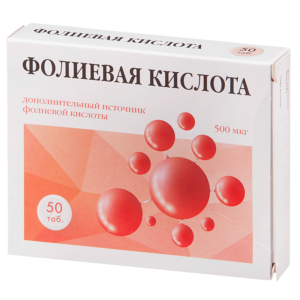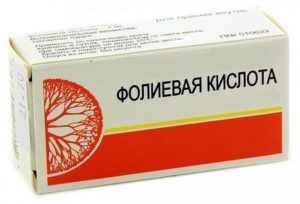Content
- 1 Folic acid composition
- 2 The benefits of folic acid for the body
- 3 Symptoms of a lack of folic acid in the body
- 4 Rules for taking and dosage of folic acid
- 5 What foods contain folic acid
- 6 Folic acid preparations
- 7 Folic acid harm and side effects
- 8 Contraindications for taking folic acid
- 9 Conclusion
- 10 Reviews of doctors
- 11 Customer Reviews
The benefits of folic acid or vitamin B9 have been known for a long time. However, active promotion of the reception began about 10 years ago. The drugs are recommended for pregnant women and people suffering from anemia due to their properties. The benefits and harms of folic acid are considered before use.

Folic acid composition
The benefits of folic acid for the body are in the regulation of metabolism, the synthesis of immune cells, the production of DNA, and the normalization of the digestive system. Vitamin B9 is beneficial for pregnant women. Its sufficient intake in the body prevents defects in the development of the neural tube and other pathologies in the fetus, which cause significant harm.
Folic acid preparations usually contain several elements. The main component is vitamin B9. The rest of the ingredients do not have a significant impact.
Medicines can have a different cost, which depends on the number of tablets in the package and production. There are the following dosage of tablets in micrograms:
- 400;
- 800;
- 1000.
Folate levels determine mood. Vitamin B9 has health benefits that are manifested in the metabolism of serotonin and adrenaline, which are neurotransmitters.
The benefits of folic acid for the body
The benefits of folic acid are undeniable. Vitamin B9 is directly involved in the synthesis and metabolism of acids and amino acids.
Folic acid is beneficial in the following conditions:
- anemia associated with a lack of an element, radiation, gastrectomy and the use of drugs;
- tropical diarrhea;
- chronic tuberculosis and intestinal inflammation;
- pregnancy;
- lactation period;
- lack of an element in the body.
Folic acid therapy is beneficial in the following cases:
- severe symptoms of B9 deficiency;
- the presence of factors leading to the lack of an element;
- the use of COCs before planning conception;
- use of Maalox, Phosphalugel, anticonvulsants;
- protein diet;
- insignificant intake of plant foods;
- violation of the functioning of the digestive tract.
For women
Folic acid benefits a woman's body. A sufficient intake of the substance ensures adequate functioning of the endocrine, musculoskeletal systems and the gastrointestinal tract. The benefits of vitamin B9 are in the effect on metabolic processes. Beneficial folic acid can help prevent weight gain.Thus, the element indirectly affects the cardiovascular system.
A useful component improves mood, which is especially important for PMS and climacteric changes, which are accompanied by increased nervousness, excitability and lability.
The benefits of folic acid for women over 40 are obvious. It is known that the metabolism slows down with age, the absorption of nutrients worsens, which is harmful to health. The beneficial properties of folic acid for women help prevent unwanted symptoms associated with hormonal changes in premenopause and menopause.
For pregnant
Folic acid is beneficial for pregnant women due to its properties. Maintaining an optimal level of the substance for several months before a planned pregnancy is essential. Adequate intake of the substance before conception reduces the risk of dangerous malformations in the child.
Experts pay attention to the fact that during pregnancy, the body needs a greater amount of useful nutrients than before conception. The component is not stored in the body in reserve due to its properties. This indicates the need for the supply of folic acid from the outside. It is especially important to maintain an adequate amount of the vitamin during the 1st trimester. It is during this period that the laying of the internal organs and the development of the nervous system in the child takes place.
The main goal of taking a nutrient during pregnancy is to reduce the risk of neural tube defects. In addition, folic acid is involved in mitosis and cell renewal. The embryo's brain begins to develop in the second week. Even with minor micronutrient deficiencies, serious harm can occur.

Lack of a useful vitamin sometimes leads to postpartum depression and decreased milk supply. The nutrient level in breast milk is correspondingly reduced, which causes insufficient intake by the baby. Harm can be observed in the development of anemia, low body weight, disruption of the intestines. Folic acid is considered to be practically the only synthetic vitamin, which is vitally important to take both for therapeutic and prophylactic purposes.
For men
Folic acid is beneficial for men. Against the background of a chronic component deficiency, the development of certain pathologies, for example, infertility and anemia, is possible.
The main indicators of men's health include the state of the sex cells, which are understood as sperm. The body requires nucleic acids and protein to make them. Lack of nutrient leads to impaired sperm production:
- decreased concentration and mobility;
- morphological disorders, for example, unnatural shape, lack of a tail.
For children
In combination with other vitamins, microelements and macroelements, folic acid ensures the full development of the musculoskeletal system, nervous system, and gastrointestinal tract. Insufficient intake of the substance with food and in the composition of drugs can be harmful in the form of developmental disorders of the child's body.
Vitamin B9 is essential for the male body in puberty. Due to the beneficial properties of the nutrient, secondary sexual characteristics develop, including coarsening of the voice, intensive growth and growth of hair on the body and face.
Symptoms of a lack of folic acid in the body
Heat treatment loses a significant percentage of folic acid, which is found in food. Nutrient deficiency is noted with its low content in the diet, insufficient absorption, as well as with an increase in the body's needs. Hypovitaminosis can be the result of excessive drinking.
Often a micronutrient deficiency is observed in pregnant women and infants under one year old. Lack of an element can harm the pregnant woman and the fetus in the form of the following consequences:
- miscarriage (detachment of the placenta or miscarriage);
- congenital anomalies (neural tube defect);
- backwardness;
- pathology of the brain;
- cleft palate;
- spina bifida;
- gestosis and anemia in a pregnant woman;
- cleft lip.
Symptoms of hypovitaminosis appear within a month and depend on a balanced diet. The following symptoms are noted:
- nervousness;
- weakness;
- poor appetite;
- vomiting;
- diarrhea;
- alopecia;
- mouth ulcers.
These symptoms are especially pronounced with breastfeeding. Vitamin deficiency can lead to postpartum depression.
A lack of folic acid is observed in a significant number of people. In some cases, hypovitaminosis progresses asymptomatically. In the absence of a therapeutic admission, the risk of stroke and heart attack increases significantly.
Specialists also talk about the benefits of folic acid for the liver. Lack of micronutrient can be observed with serious organ pathologies. It is the liver that converts the vitamin into tetrahydrofolate.

Rules for taking and dosage of folic acid
Taking folic acid can be both therapeutic and prophylactic. The dosage is recommended by the doctor, taking into account the needs of the body.
When planning a pregnancy
Prophylactic intake during pregnancy planning is 2-3 mg per day.
During pregnancy
In the absence of a deficiency in the element, the daily dose is 0.4 mg per day. The dosage is increased to 0.8 mg per day against the background of deficiency conditions.
When breastfeeding
During lactation, the required dosage of the micronutrient increases and amounts to 0.3-0.6 mg per day. A useful vitamin can be taken in the form of multivitamin complexes.
For women over 40
A sufficient intake of micronutrient provides a decrease in the signs of climacteric changes due to its beneficial properties. Prophylactic intake involves the consumption of up to 0.3 mg of the substance once a day. The presence of hypovitaminosis can cause serious harm to the body and indicates the necessary intake of a therapeutic dose of up to 1 mg daily.
With anemia
The folate deficiency type of anemia causes harm in the form of a violation of cell maturation. The dosage of useful folacin in the development of a pathological condition varies from 1 to 5 mg.
Slimming
An additional intake of a useful nutrient is necessary when losing weight due to its properties. The prophylactic dose avoids the development of hypovitaminosis and is 400-800 mcg during the day.

What foods contain folic acid
The nutrient is not synthesized by the body. A significant part of the nutrient comes from food and vitamin supplements. In case of disorders of the digestive tract, the assimilation of the element is often difficult.
The micronutrient is found mainly in plant foods, which have many beneficial properties:
- onions, spinach, dill, parsley;
- peas, beans;
- buckwheat, oats and bran;
- bananas, grapefruit, melon;
- walnuts, dried apricots;
- pumpkin, beets.
A useful source of the element is meat products:
- pork;
- mutton;
- kidneys and liver;
- bird.
Dairy products and fish are distinguished by many useful properties and sufficient substance content. When using bifidobacteria, stimulation of the formation of a nutrient in the intestine is noted.
It should be remembered that the beneficial properties of plant foods are destroyed during heat treatment and long-term storage. The breakdown of a micronutrient in meat is slower. That is why experts recommend eating plant foods in the form of salads without heat treatment. They retain maximum useful properties.
Folic acid preparations
The beneficial vitamin B9 comes in several dosage forms.
Tablets
Tablet preparations are easy to use. Experts call the following popular names:
- Folic acid (100 or 400 mg);
- Foliber (B9 and B12);
- Folic acid Doppelgerts Active (B9, C, B6, B12, E);
- Maltofer (B9 and iron);
- Fenuls zinc (B9, zinc, iron).
Ampoules
The benefits of the drug can be expected when using ampoules. The drug is used in the form of injections due to its properties. Each ampoule contains 400 mcg as active ingredient.
Folic acid harm and side effects
High doses of drugs are not always beneficial and can be harmful in the form of an overdose. Undesirable effects cannot be ruled out, which include:
- allergic reactions;
- bronchospasm;
- hyperthemia;
- redness of the skin;
- rash.
It has been proven that the nutrient in dosages significantly higher than the average does not cause harm in the form of toxic effects. However, the development of anemia is possible, which is associated with the properties of the substance. Overdose sometimes provokes kidney dysfunction, stool disorders, and increases anxiety.

Contraindications for taking folic acid
The element has many useful qualities and properties. There are no significant contraindications to admission. Doctors do not recommend taking folic acid preparations in the following cases:
- hypersensitivity reactions;
- deficiency of sucrose and isomaltase;
- age up to 3 years;
- intolerance to fructose.
Conclusion
The benefits and harms of folic acid have been studied extensively. The element takes part in many processes in the body. Folic acid deficiency is harmful to health, which proves the need for regular preventive intake.

